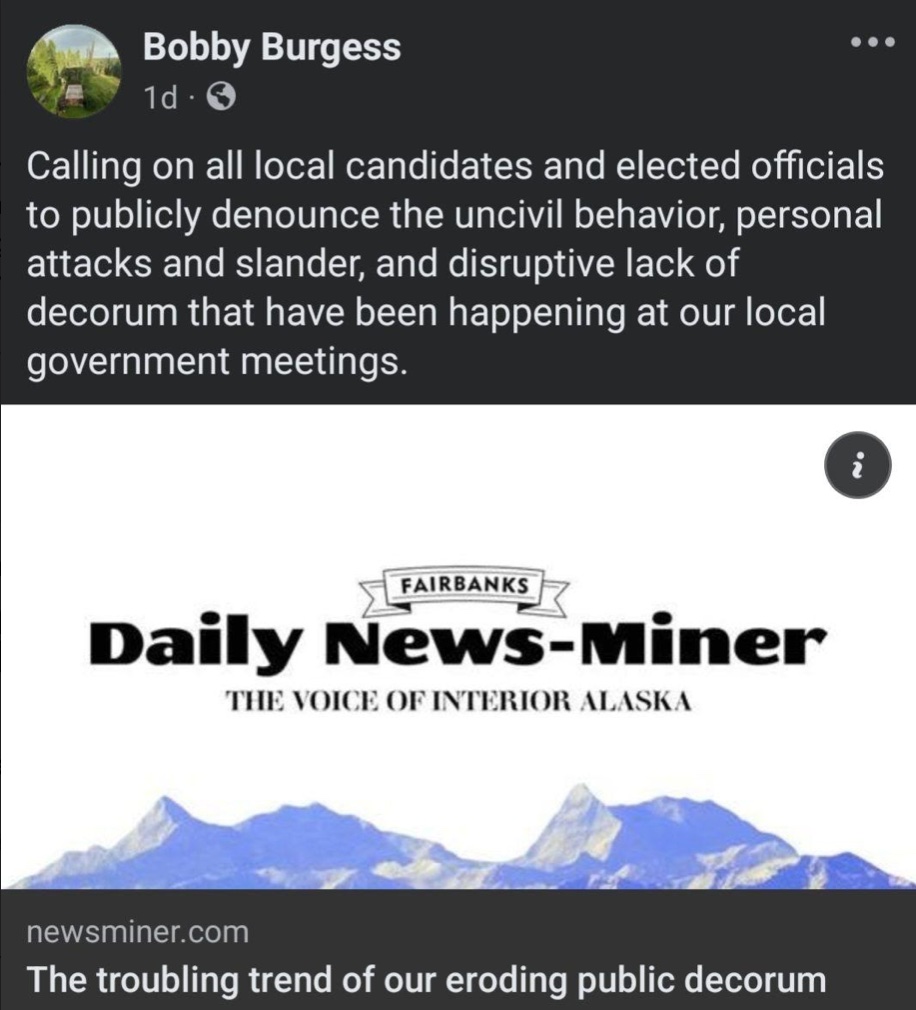By ROBERT SEITZ
I have in the past expressed hope the Alaska Legislature would encourage production of Cook Inlet gas.
I was, however, very disappointed when a legislator could not move forward a bill to reduce royalty payments on Cook Inlet gas because he could find no certainty it would work to increase production.
This much is clear: It can’t work if not passed. Whether or not it would work is not the point, but that it might work is worth a try.
From Nathaniel Herz article published Aug, 27 in the Alaska Beacon, the results of legislative inaction seem clear: “With time running out before a shortfall in local natural gas production forces Alaska’s urban utilities to import more expensive supplies from outside the state, two small companies say they have reserves that could help fill the gap. But executives from the two privately owned oil companies, BlueCrest Energy and HEX, say they won’t be able to drill wells to access the gas on their state-leased lands without government help.”
The positions that these and other oil and gas producers find themselves is the result of actions of previous administrations in Alaska; of the actions of the federal regulatory agencies and of the ESG (Environmental, Social, Governance) influence on financial institutions. There needs to be some reversal of the previous actions to get them back to a position they should have been at without interference of outside agencies.
The utilities are setting up to sign contracts and install facilities to receive LNG from a non-Alaskan source which with significantly increase the price of electricity and fuel gas for the foreseeable future.
Senate Bill 194 and House Bill 223, both of which were introduced, would have temporarily reduced the royalty rates on production of new Cook Inlet Gas. This is one solution asked for by at least one Cook Inlet gas producer.
For the legislator who could not move the bill forward because he was not certain it would achieve the desired result, he must think that work in the Legislature is a game and not serious business. The game of politics can seriously hurt Alaska and Alaskans if the concern for the results in not considered more important than a perceived political posture. Is there a leader in the crowd?
I have been saying for years that renewable energy will not be able to provide the type of reliability and resilience that is needed for the Railbelt utiiites to ensure the safety and survivability of the citizens of this state that Cook Inlet gas can provide.
Pumped hydro could have helped if those in charge had worked harder to find a way to make it work, but it seems hopeless if Eklutna Power Plant can’t be kept in production. This is indicative of the seriousness with which Alaska energy is considered. Paying to import LNG from a foreign source is embarrassing for an energy-rich state.
My investigation shows that Alaska is not warming 2- to 4-times as fast as the rest of the planet. The past 2 or 3 years have brought back some of the more extreme cold that we did not have for a few years during the last decade. The fear of greenhouse gas-caused global warming is proving to be not founded on good science. The extreme weather issues that are promoted so vigoursly in the news appear to be effects of a shifted jet stream, resulting from the recent warming of the Arctic waters.
The Arctic waters have cooled considerably over the past few years and the subarctic waters are almost back to last-century norms. We need to have our experts research what really is going on and not be so concerned with decarbonization, which may be a useless endeavor.
I worked on the Flour/Northwest natural gas pipeline project in 1978 in Fairbanks. Forty six years later there is still no natural gas flow from the North Slope into Fairbanks. If that much of the gas pipeline had been installed even 30 years ago we would have been able to fuel gas turbine generation in Fairbanks to feed the north end of the Railbelt and would have slowed the rate of consumption of Cook Inlet gas. Maybe we have been looking at huge projects instead of more realistic projects that would better benefit Alaska. It all goes back to leadership and a long term energy plan, which still does not exist.
Starting today, how long will it take to get actions and policies in place to get that Cook Inlet gas production increase started? Can we do it by next week? Surely someone can work out a plan on a napkin, like some of the deals for the haul road and TAPS were done.
Sense the urgency of another cold winter in Alaska and get some desire to make it happen. We have an energy crisis, not a climate crisis. We have an economic crisis, not a climate crisis. Termination dust will be on the surrounding mountains very soon.
Robert Seitz is a professionally licensed electrical engineer and lifelong concerned Alaskan.











